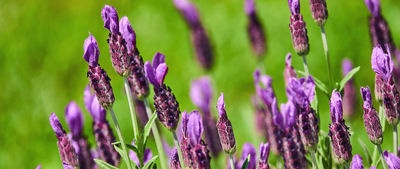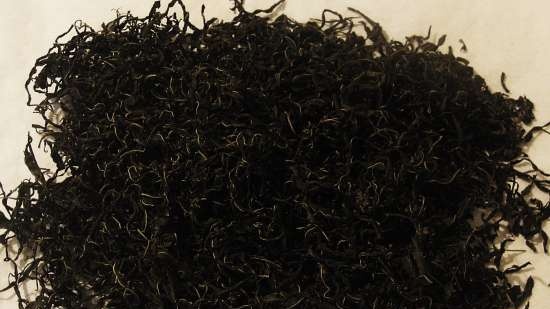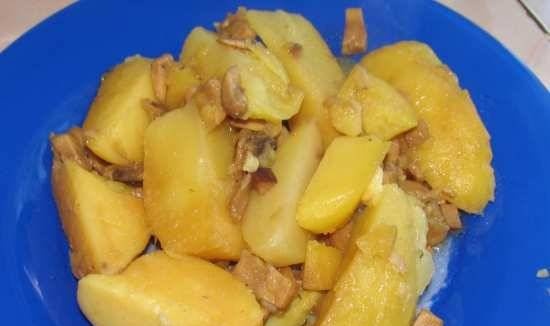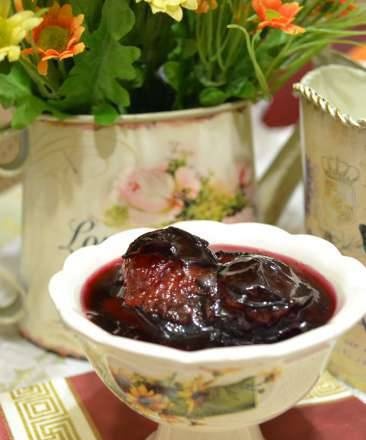|
 There are no useless plants on earth. There are plants not yet known by man. But every year science discovers in them more and more amazing properties that are useful for a person, less and less mysterious, not yet read pages in the huge book of Nature remain. There are no useless plants on earth. There are plants not yet known by man. But every year science discovers in them more and more amazing properties that are useful for a person, less and less mysterious, not yet read pages in the huge book of Nature remain.
What are the benefits of plants and, above all, medicinal ones?
It depends on the presence in them of a complex of substances different in chemical structure and therapeutic action. The most important of them are alkaloids, glycosides, pectins, saponins, tannins, flavones, essential and fatty oils, vitamins, plant hormones, organic acids, mineral salts, resins, trace elements and others.
Alkaloids - These are complex natural nitrogen-containing organic compounds of various chemical compositions found in plants. The maximum amount of them accumulates in plants during flowering and budding. In large doses, alkaloids are very toxic, in small doses they can serve as a valuable remedy. They are characterized by a complex and multifaceted effect on the human body - they normalize metabolism, the secretion of the digestive system, blood pressure ...
Glycosides - crystalline, less often amorphous substances, consisting of sugars associated with a non-sugar residue of the most diverse nature.
In medicine, the most widely used cardiac glycosides... They disintegrate easily with prolonged boiling and lose their healing properties. This must be taken into account when preparing medicinal products.
More resistant and non-toxic anthraglycosideswhich have laxative properties.
Some plants (wormwood, dandelion) contain the so-called bitter glycosideswhich are used medicinally as bitterness to increase appetite. They enhance the peristalsis of the stomach, increase the secretion of gastric juice.
The bitter compounds belong pectins - reserve polysaccharides, if necessary, converted into monosaccharides. In the body, they form a sticky suspension that easily binds to many heavy metals (lead, strontium, cobalt) and radioactive substances. Such insoluble suspensions are not able to be absorbed into the blood, they are excreted from the body. Pectin substances play an important role in the prevention of atherosclerosis, act as an anti-inflammatory and analgesic agent.
 Tannins refer to complex organic compounds, characterized by the ability to bind proteins and metals. Of the tannins, tannin, which is a glycoside, is most often used in medical practice. It is obtained from growths on oak leaves. Tannins are astringent and anti-inflammatory. A large number of them are found in the bark of oak, St. John's wort, tea leaves, forest strawberries... They are used for various diseases of the gastrointestinal tract, stomatitis, burns, skin diseases. Tannins refer to complex organic compounds, characterized by the ability to bind proteins and metals. Of the tannins, tannin, which is a glycoside, is most often used in medical practice. It is obtained from growths on oak leaves. Tannins are astringent and anti-inflammatory. A large number of them are found in the bark of oak, St. John's wort, tea leaves, forest strawberries... They are used for various diseases of the gastrointestinal tract, stomatitis, burns, skin diseases.
A variety of glycosides - saponinsfound in representatives of more than 70 families. Saponin-containing plants are used as an expectorant, diuretic, tonic and stimulant. Some saponins lower blood pressure.
The group of glycosides includes mucous substances... They are part of the cell walls and have enveloping and emollient properties. They are rich in tubers of orchis and rhizomes of marshmallow, seeds flax and quince. Plant preparations that contain mucus are widely used in the treatment of bronchial, gastrointestinal and other inflammatory diseases.
Recently, the flavonoid glycosides... They are divided into three groups - flavones (kaempferol, quercetin, rutin and others), flavonols and isoflavones. These are organic, nitrogen-free phenolic compounds of yellow color, found mainly in flowers and leaves of many plants. They have a wide range of pharmacological actions: they have P-vitamin activity, have a capillary-strengthening, bactericidal, choleretic effect, and contribute to the removal of radioactive substances from the body. The number of isolated and chemically identified flavonoids reaches over two thousand items. On their basis, hepatoprotective drugs have been created. carsil, legalonas well as anti-inflammatory - liquiditon other.
Contained in plants in pure form or in combination with a sugar residue in the form of a glycoside coumarins and furocoumarins... Most often, they are found in the fruits and roots of plants of the umbrella family, legumes and others. Furocoumarins are most valuable for medicinal purposes. They are poorly soluble in water, sensitive to light, and are used as vasodilators, antispasmodics, photosensitizers, and antitumor agents.
Essential oils Mostly fragrant, pungent-tasting compounds found in flowers, leaves and seeds of plants. More than two thousand essential oil plants are known. Essential oils are used for inhalation; they kill bacteria, fungi, have anti-inflammatory, soothing, analgesic, diuretic and diaphoretic properties.
They are widely used in the chemical, pharmaceutical and food industries.
Resin - plant secretions, in their chemical composition, are close to essential oils. Usually they are transparent, more often solid, less often soft, do not dissolve in water, and have a characteristic odor. Resins that do not dry for a long time are called balms. Resins are contained in the resin of coniferous trees, birch buds, aloe juice, dandelion. They have a bactericidal and anti-putrefactive effect.
Phytoncides - organic substances with a strong antibiotic effect. They destroy bacteria, fungi, protozoa, stimulate the body's defenses. There are many of them in garlic, onions, nettles, St. John's wort, sage, tansy, chamomile, horseradish, viburnum, as well as in the leaves of oak, birch, pine, currant, lilac... Phytoncides are called atmospheric vitamins, since, penetrating the patient's body through the lungs, they have a good effect on the well-being and the nervous system. In modern medicine, they are widely used in the form of aerosols for the treatment of infectious and viral diseases.
 Vitamins - a group of biologically active organic compounds that play an important role in metabolic processes in the body. More than 20 different vitamins are known. Vitamins - a group of biologically active organic compounds that play an important role in metabolic processes in the body. More than 20 different vitamins are known.
Vitamin A it is not present in pure form in plants, but is contained in them in the form of provitamin carotene. A lack of it in the body leads to loss of vision, stunted growth, impaired cholesterol metabolism and liver function, causes dryness, wrinkling of the skin, mucous membranes, conjunctiva and cornea of the eye. Rich in carotene apricots, persimmon, stinging nettle, carrot, celandine, calendula and other plants.
Vitamin B1 (thiamine) the greatest amount is found in cereal grains and buckwheat... Lack of vitamin disrupts fat metabolism, heart rate, and leads to disorders of the nervous system.
Vitamin B2 (riboflavin) is found in the embryos and shells of cereal grains, peas, and other plants. Fermented vegetables and kombucha are a good source of vitamin B2: Vitamin ensures the functioning of the liver, stomach, normalizes vision, promotes hematopoiesis, affects the growth and development of the fetus.
Vitamin B6 (pyridoxine) contained in unrefined cereal grains, corn and vegetables. Its presence in sufficient quantities in the body ensures the normal functioning of the central and peripheral nervous system.This vitamin plays an important role in metabolic processes.
Vitamin C (ascorbic acid) a lot in currants, unripe nuts, rose hips, most other berries and fruits, herbs. It is used for the prevention and treatment of many infectious diseases, non-healing wounds, atherosclerosis, scurvy, internal and nosebleeds, mental and physical exertion.
Vitamin E (tocopherol) found in green peas and beans, sea buckthorn and salads, wheat, corn and oats - in all green parts of plants and vegetable oils. He plays an important role in metabolic processes. Its lack leads to degenerative changes in internal organs, skeletal muscles.
Vitamin F is a complex of unsaturated fatty acids and has an anti-sclerotic effect, promotes the elimination of cholesterol from the body.
Vitamin K (phyloquinone) found in all green parts of plants: cabbage, parsley, lettuce, tomatoes, cereals. Vitamin ensures normal blood clotting.
Vitamin P (rutin) found in the fruits of most plants. The functioning of the vessels of the body is associated with it, the vitamin reduces their permeability and fragility.
Vitamin PP (nicotinic acid) is present in vegetables and fruits, buckwheat, legumes, mushrooms, yeast. With its deficiency, memory decreases, appetite worsens, weakness and pain in the stomach appear.
Vitamin U necessary for the treatment of gastric ulcer and duodenal ulcer. A lot of it in cabbage.
A person's need for vitamins depends on many factors - living and working conditions, time of year and, of course, health.
 At home, water infusions and decoctions are most often prepared, less often alcoholic tinctures, oil solutions, juices, powders and ointments. At home, water infusions and decoctions are most often prepared, less often alcoholic tinctures, oil solutions, juices, powders and ointments.
Infusions - water extracts of plants. They are prepared from leaves, flowers, stems. The raw material is crushed (no more than 5 mm), placed in an enamel or porcelain dish, poured with cold boiled water, covered with a lid and placed in a water bath (in boiling water) for 15 minutes. Cooled at room temperature, filtered, and the infusion is ready for use.
Much more often the infusion is prepared by pouring boiling water over the raw materials. After infusion for 5 - 15 minutes, it is ready to use.
Decoctions - water extracts obtained by boiling. They are prepared from bark, roots, rhizomes, crushed to 3 mm, by the type of infusions, but they are boiled in a water bath for longer - up to 30 minutes.
Tinctures prepared in special laboratories, using 70 ° or 40 ° alcohol. You can also make the tincture at home. The crushed raw materials are poured with alcohol, sealed and kept at room temperature for 7 days. The resulting liquid is filtered. When used, dosed in drops. These tinctures are suitable for long-term storage.
Oil solutions is obtained by dissolving biologically active substances of a plant in oil. In this case, the raw material is not heated, but is poured with vegetable oil and kept for 1 - 2 weeks in a warm, dark place and is periodically mixed. The strained solution is ready for use.
Fresh Juice plants are obtained by passing their fruits, stems, roots or rhizomes through meat grinder... Squeezed juice is an effective remedy in the treatment of a number of diseases.
Powders - the simplest form of herbal medicine. The dried plant is ground into powder in a mortar or coffee grinder. Used internally (washed down with water or milk) or to powder wounds, ulcers ...
If the powder is mixed with petroleum jelly, unsalted lard, vegetable or butter, you can get an ointment. It is intended for external use. Ointments prepared with lard or oil have a deeper effect, as they easily penetrate the skin.
Berkalo L.A. - In search of the key grass
|
 There are no useless plants on earth. There are plants not yet known by man. But every year science discovers in them more and more amazing properties that are useful for a person, less and less mysterious, not yet read pages in the huge book of Nature remain.
There are no useless plants on earth. There are plants not yet known by man. But every year science discovers in them more and more amazing properties that are useful for a person, less and less mysterious, not yet read pages in the huge book of Nature remain. Tannins refer to complex organic compounds, characterized by the ability to bind proteins and metals. Of the tannins, tannin, which is a glycoside, is most often used in medical practice. It is obtained from growths on oak leaves. Tannins are astringent and anti-inflammatory. A large number of them are found in the bark of oak, St. John's wort, tea leaves, forest
Tannins refer to complex organic compounds, characterized by the ability to bind proteins and metals. Of the tannins, tannin, which is a glycoside, is most often used in medical practice. It is obtained from growths on oak leaves. Tannins are astringent and anti-inflammatory. A large number of them are found in the bark of oak, St. John's wort, tea leaves, forest  Vitamins - a group of biologically active organic compounds that play an important role in metabolic processes in the body. More than 20 different vitamins are known.
Vitamins - a group of biologically active organic compounds that play an important role in metabolic processes in the body. More than 20 different vitamins are known. At home, water infusions and decoctions are most often prepared, less often alcoholic tinctures, oil solutions, juices, powders and ointments.
At home, water infusions and decoctions are most often prepared, less often alcoholic tinctures, oil solutions, juices, powders and ointments.







